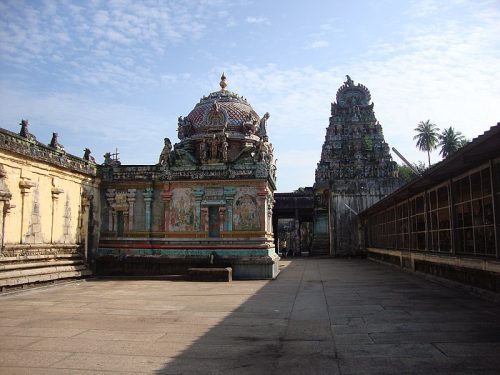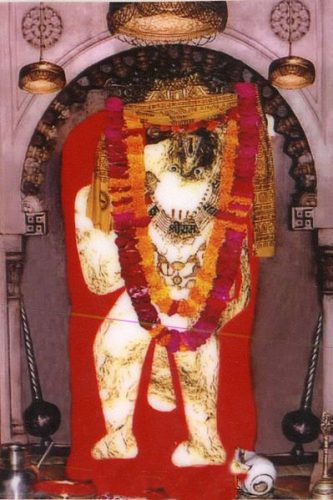Explore sacred healing temples in India, renowned for their miraculous cures and spiritual rejuvenation, offering solace and hope to countless devotees.

India, a land steeped in spirituality and ancient traditions, is renowned as one of India’s healing temples which are more than just places of worship. These sacred sanctuaries are believed to possess profound healing powers, attracting countless pilgrims seeking solace from physical, mental, and spiritual ailments. The concept of divine intervention in healing has been deeply ingrained in Indian culture for centuries.
From the serene Himalayan shrines to the bustling temple towns of the South, each healing temple carries its unique aura and mystical charm. Pilgrims undertake arduous journeys, often enduring physical hardships, with unwavering faith that the divine will restore their health and well-being.
The rituals, chants, and sacred waters of these healing temples are believed to channel powerful energies that bring about miraculous recoveries. Beyond the tangible cures, these healing temples offer a sense of peace and spiritual rejuvenation, providing a holistic healing experience.
In a world where modern medicine often leaves gaps, these ancient healing temples stand as testaments to the enduring belief in the power of the divine. This exploration into India’s healing temples unveils the profound connection between faith and health, highlighting stories of miraculous recoveries and the timeless traditions that continue to inspire hope and devotion.
Faith has always played a pivotal role in the healing processes at these healing temples. Whether it’s the soothing chants, the divine aura, or the sacred waters, the belief in the power of the divine facilitates a holistic healing experience. Each temple has its unique story and method of healing, passed down through generations let us deeply study it………..
Vaithiswaran Koil, Tamil Nadu
Vaitheeswaran Koil, also known as Pullirukkuvelur Temple, is a renowned sanctuary dedicated to Lord Shiva, revered here as Vaitheeswaran, the ‘God of Medicine.’ Situated on the northern bank of the River Cauvery, this temple holds a significant place among the 276 Thevara Padal Petra Sthalams, celebrated in ancient Tamil hymns like Thevaram and Tirupugazh. Devotees flock to this temple with the belief that Lord Vaitheeswaran possesses the power to cure all types of skin diseases, echoing the legends where Mars (Angaraka) was healed of leprosy by the deity.
The temple also holds astrological significance, with Mars playing a vital role in establishing strong marital relationships in one’s horoscope. One of the temple’s unique attractions is the collection of ancient palm leaf manuscripts used for Naadi Josiam, an astrological prediction practice that draws many seekers.
A dip in the sacred Siddhamirtham tank believed to cure all ailments, adds to the temple’s healing aura. Vaitheeswaran Koil stands as a testament to the intertwined nature of faith, medicine, and astrology in Indian tradition, offering solace and hope to all who visit. The temple also practices ‘Nadi Astrology,’ where ancient palm leaf manuscripts reveal one’s past, present, and future, offering guidance for a healthier life.
Mehandipur Balaji Temple, Rajasthan
Mehandipur Balaji Temple, situated in Brahmbad, Dausa, Karauli district near Todabhim and Hindaun city in Rajasthan, is a renowned sanctuary dedicated to Lord Hanuman, worshipped here as Balaji, the childhood form of the deity known as the ‘Sankat Mochan’ or redeemer of crises. This temple attracts countless pilgrims from around the world, famed for its ritualistic healing and exorcism practices. Devotees believe that the temple offers powerful counter-curses against evil spirits, black magic, and phantoms.

Three primary deities are worshipped at Mehandipur Balaji: Lord Hanuman as Balaji, Lord Bhairav, and Shri Pretraj Sarkar (The King of Evil Spirits). These deities are believed to have the power to cure those afflicted by supernatural forces. Legends tell of Mughal emperors who attempted to destroy the temple, only to find the idol’s roots deepening into the hill, thwarting their efforts. A miraculous pot at the feet of the presiding deity never runs dry, thanks to the continuous flow of ‘Blessed Holy Jal’ from the left side of Lord Balaji Hanuman’s chest.
Despite scepticism from medical science, the devout followers of Balaji hold an unwavering belief in the temple’s mystical healing powers, considering them beyond metaphysical explanation.
Guruvayur Temple, Kerala
Guruvayur, often referred to as the Dwaraka of the South, is home to the historic Sree Krishna Temple, one of Kerala’s most revered pilgrimage destinations. This temple, a significant spiritual hub in India, was rebuilt in 1638 C.E., showcasing stunning architectural elements that reflect its rich history.
Traditionally, the shrine faces east and features two towering Gopurams—Kizhakkenada in the east and Padinjarenada in the west. The temple is adorned with several Deepastambams (pillars of light), the most notable being the 24-foot-tall eastern pillar with thirteen circular receptacles, creating a breathtaking sight when illuminated. The Dwajasthamba, a 70-foot-tall gold-covered flag-staff, adds to the temple’s splendour.
The idol of Guruvayoorappan, crafted from the rare Padala Anjanam or Black Bismuth stone, is believed to possess healing powers. Devotees collect the Abhishekam water, used to bathe the idol, for its reputed ability to cure ailments. The temple is also a popular site for the Annaprashan ceremony (first solid food feeding) and weddings, believed to bestow blessings for long and happy marriages. The Thulabharam ritual, where devotees offer their weight in goods, is another unique tradition at Guruvayur.
Guruvayur Temple’s architecture, with its intricate carvings, majestic Gopurams, and enchanting illuminated Deepastambams, embodies Kerala’s cultural heritage. The temple also houses images of Ganapathy, Lord Ayyappa, and Edathedathu Kavil Bhagavathy.
Renowned for its vibrant festivals, Guruvayur offers an immersive cultural experience during celebrations like Guruvayur Ekadasi, Utsavam, and Vishu. These festivals, featuring traditional music, dance, and rituals, attract thousands of devotees, making a visit to the temple both spiritually and culturally enriching.
Kamakhya Temple, Assam
Goddess Kamakhya holds a revered place in Hindu mythology, celebrated for her unique connection to yoni healing and the cyclical nature of life. Located in Guwahati, Assam, the Kamakhya Temple is a sacred hub for advanced tantric practices, drawing spiritual seekers from diverse traditions.
Exploring the essence of Goddess Kamakhya reveals that modern spiritual interpretations often fail to grasp the profound depth of her significance. Her symbolism transcends the physical, representing the universal energy that flows through all living beings. Known as the menstruating Goddess, Kamakhya occupies a sacred space in the hearts of devotees and tantric practitioners. The temple is believed to be the site where the Goddess undergoes her symbolic menstruation annually.
A unique ritual at the Kamakhya Temple is the Ambubachi Mela, an annual celebration during the monsoon season. Devotees from far and wide gather to witness this symbolic menstruation, considered a sacred and transformative event.
The temple’s inner sanctum houses an awe-inspiring representation of the divine feminine’s creative power, the source of all life. This sacred symbol transcends physical healing, delving into spiritual and energetic realms to awaken and balance the divine feminine energy within individuals.
Through these healing practices, devotees can release emotional blockages, traumas, and negative patterns, fostering profound healing and empowerment. The sacred idol serves as a gateway to spiritual awakening, offering a path towards deep self-discovery and inner transformation.
Prasanna Venkatachalapathy Temple, Tamil Nadu:
The temple is mentioned in the Gunaseela Mahaatmiyam of the Bhavishyotra Puranas. Gunaseela Rishi, after returning from the Himalayas and visiting Tirupati, was so captivated by Venkatachalapathy that he began a severe penance at his ashram, desiring the deity’s presence in Gunaseelam.
Venkatachalapathy, along with the Goddess, appeared in his vision and promised to remain there until the end of Kali Yuga. When Gunaseela Maharishi was called away, he entrusted his disciples with the temple’s rituals. However, natural disasters and wild animals eventually drove them away, leaving the deity covered by an anthill.
The temple is renowned for its ability to cure mental ailments. Those suffering from mental challenges or depression visit the temple, where they are cared for over 48 days. Prayers offered to the presiding deity are believed to heal the patients. The temple houses a mental health rehabilitation centre licensed by the Government of Tamil Nadu, the first of its kind in the country.
The centre provides individual rooms and washrooms, with weekly visits from a psychiatrist and care from dedicated volunteers. On specific days, sacred water is sprinkled on the patients during Uchi Kaalam (noon) and Artha Jaamam (night) for 48 days to cleanse them of disease and negative influences. Sincere prayers to the deity are said to facilitate healing. The temple also attracts those with physical challenges seeking relief and those who are unable to visit Tirupati, seeking to have their wishes fulfilled at Gunaseelam.
Pataleshwar Temple, Uttar Pradesh
The Pataleshwar Temple is situated in the village of Sadatbadi in Bahjoi, a Nagar Palika Parishad city in the Sambhal district of Uttar Pradesh’s Moradabad division.
This temple is renowned for its miraculous ability to cure skin maladies. At the centre of the temple‘s sanctum lies a Shivalingam, to which devotees offer brooms in a ritual believed to rid them of skin ailments. It is said that supernatural elements present within the temple premises aid in the healing process. This ancient practice has been followed since the temple’s establishment.
Once, there was a man named Bhikhari Das, the wealthiest person in his village, but he suffered from a painful skin ailment marked by black spots all over his body. Despite trying numerous treatments, nothing worked. One day, while visiting his Ayurvedic doctor, he stopped at an ashram for water. As he knocked and entered, a Mahant accidentally touched him with a broom while cleaning. Miraculously, Bhikhari Das’s skin ailment vanished instantly, and his pain disappeared.
Astonished, Bhikhari Das asked the Mahant about the miracle. The Mahant, a devout follower of Lord Shiva, attributed the healing to Shiva’s blessings. Grateful, Bhikhari Das offered a bag of coins in thanks, but the Mahant declined and instead asked him to build a temple for Lord Shiva. Bhikhari Das agreed and established the Pataleshwar Temple. Since then, offering brooms to the Shivalingam has become a ritual, with many reporting cures for their skin ailments. This story exemplifies India’s rich tapestry of miracles and devout beliefs.
While faith and spirituality play crucial roles, many researchers believe there is a scientific basis to the healing experienced at these healing temples. The positive energy, the serene environment, and the collective power of prayer and meditation contribute to a conducive atmosphere for healing. Additionally, the rituals often involve natural elements like water, herbs, and oils known for their therapeutic properties.
Visiting these healing temples is not just about seeking cures; it’s a holistic journey encompassing faith, tradition, and spirituality. Pilgrims often undertake arduous journeys, enduring physical hardships, reflecting their unwavering faith in the divine. This journey itself, filled with rituals, prayers, and a deep connection with the divine, becomes a transformative experience.
Read more: Latest



